
Well, we don’t just offer an art box with monthly supplies…we stimulate your creativity with projects that have an interesting history lesson…and indigo has a pretty cool history behind it! Indigo is not only a color meant to stimulate creativity and meditation, but also has a history behind it that includes:
- Isaac Newton and the 7 colors of the rainbow;
- a strong female entrepreneur from South Carolina who figured out how to make indigo dye;
- Levi jeans;
- and even a rebellion led by Mahatma Gandhi in India.
Indigo: Newton’s Mystical 7th Color
Do you remember learning ROYGBIV when you were growing up? Yep, those seven colors of the rainbow—but “I” for Indigo? Can you even really see this color? It mysteriously blends between blue and violet, so much so that many people even leave it out today. So why was it originally included in the color spectrum?
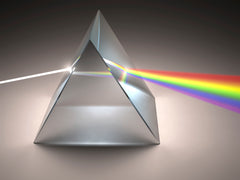

It was good old Sir Isaac Newton who was determined that there must be seven, not six, colors back when he was tinkering with prisms and discovering what would become the modern theory on opticks. In 1655, when Newton was sent home from school at Cambridge during the bubonic plague and began experimenting with his prisms. He explored how light passed through the prisms at different angles and formed different colors. And the seven colors that he named would become the colors of the rainbow.
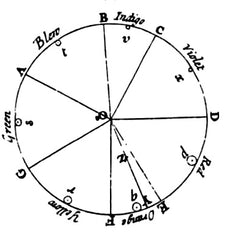
Newton's Original Color Wheel
He decided that there must be seven colors because the number was spiritual and mystical—there were seven planets (at the time) and seven notes on the musical scale. Newton knew that green, the strongest color from the sun, would be the central color, and around green would fall red, orange, and yellow at one end and blue and violet at the other end. Now, he just needed his seventh color…what about the new blue dye that had been imported from the Indies? The Indigo Dye.
Indigo: The Dye and the Plant
Indigo was actually a plant that got its name because it came from the Indus Valley, discovered some 5,000 years ago, where it was called nila, meaning dark blue. And by the 7th Century BC, people starting using the plant as a dye—the Mesopotamians were even carving out recipes for making indigo dye onto clay tablets for record-keeping. By 1289, knowledge of the dye made its way to Europe—when the Venetian merchant traveler, Marco Polo reported on it.
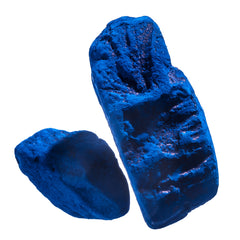

Indigo Cakes and Marco Polo
But it wasn’t until 1640 when demand started to pick up for indigo. Indigo dye could be made from two different types of plants—the indigo plant, which produced the best results, and from the woad plant. The British were producing indigo with woad, a plant that yielded a lesser quality dye, but a plant they could grow. They even tried to hold their monopoly on indigo dye by managing to ban the indigo plant for years, claiming that it was poisonous. But eventually the British began to focus on tea and other crops—and meanwhile, the French started to get their fair share of the market. But, this was problematic. The French had gone to war with Britain, so the British could hardly rely on the French for this precious blue dye. So where did they turn? To their colonies, in America.
Eliza Lucas: Conquering Indigo in South Carolina
And who was the mastermind who finally figured out how to grow the indigo plant in America, make it into dye, and export it? Yup, a woman. Despite the failed crops and other male farmers who tried to undermine her, Eliza Lucas used her wit and determination to not only save her farm but to create a partnership with other farmers in South Carolina that allowed them to team together and support the indigo dye market for years.

Eliza Lucas
Lucas discovered how to grow the crop when America was at war against the Spanish Empire in 1740 (and soon to fight in the war for independence against Britain). Lucas’s father had been sent off to battle, and she was left in charge of their plantation in Charles Town, South Carolina. Her father had been stationed in the Caribbean and came across many different seeds like alfalfa and ginger…and indigo. He decided to send them all to his daughter so she could try and grow them in South Carolina.
Eliza set to work growing the indigo crop since she knew the demand from Britain was strong for indigo dye. Despite her efforts, none of the indigo seeds yielded a successful harvest. But Eliza was determined to keep trying, and she finally had a successful harvest after several seasons. Her father sent a friend, Nicolas Cromwell, to help her learn how to make cakes out of the dye to export. Cromwell, however, saw that her successful business could damage his own and tried to ruin her harvest as they made the cakes. She quickly fired him and continued to pursue her trade—but she knew she couldn’t support demand from the British alone. So, instead of keeping her trade a secret, she shared her knowledge about how to grow the crop with other fellow farmers. And Indigo quickly became a cash crop, second only to rice, and the farmers raked in profits. Demand soared from 5,000 pounds in 1746 to 130,000 pounds in 1748! Now that’s a ton of indigo (actually 65 tons!).
Indigo Revolts, Levi’s Jeans, and Indigo Mood
But the story of indigo was just getting interesting. British demand soon plummeted – the American War for Independence started in 1775 so the British picked up the trade for themselves once again.
Unfortunately, they did this by making indigo dye in India, exploiting many Indian workers. The treatment was so bad that there were indigo revolts and riots in the 1860s. In fact, Mahatma Gandhi’s first act of peaceful civil disobedience was in support of the indigo workers. He even went to court on their behalf to fight for better wages and improved working conditions.
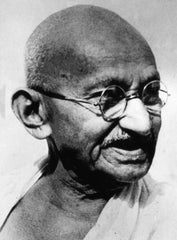
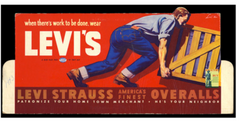
And in America, they continued their love for indigo blue. Americans made work shirts with indigo blue collars, that showed less dirt than white collars. And in 1873, Jacob Davis and Levi Straus used the blue indigo dye to make their denim jeans in San Francisco—called Levi’s.

Indigo was not just a commercial success as a dye but a color that some think can inspire particular moods or qualities. It’s said that those with an “indigo aura” have great intuition and a profound inner awareness. Duke Ellington even called one of his jazz pieces “Mood Indigo.” I’ll leave it up to you to see if indigo can inspire your creativity!
Get Started
Primary Source and for Additional Reading: The Brilliant History of Color in Art by Victoria Finlay
Image Attributions: Indigo Cakes Photograph: David Stroe
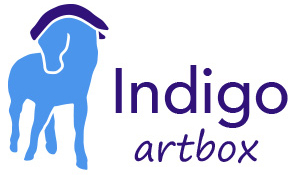
Leave a comment